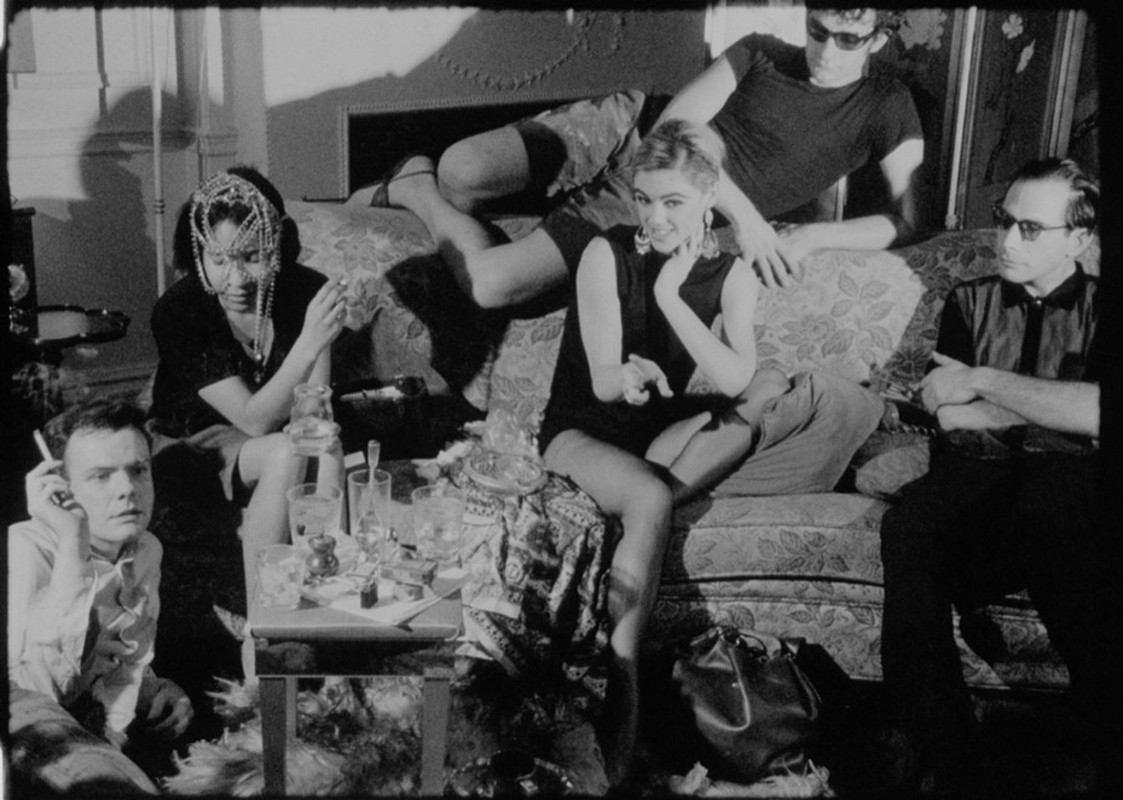“Isn’t it wonderful that we can be just friends?”Afternoon (Andy Warhol, 1965)
Apr
19
National Hanging Out Day

Fabulous Factory people hanging out. Edie interacts with the camera, the rest looks mostly bored. Image owned by the Warhol Foundation yadda yadda for educational purposes only.
Part of the never-realised #SuperStar-studded The Poor Little Rich Girl Saga, #Warhol's Afternoon documents a day in the life of doomed socialite Edie Sedgwick. Miss Sedgwick and her entourage (Ondine, Dorothy Dean, Arthur Loeb, and Donald Lyons) spend an afternoon at #Edie's place. The superstars, the bored and the beautiful, chat, drink and do drugs.
art
“Back to the old tricks.”Vérités et Mensonges [F for Fake] (Orson Welles, Gary Graver, Oja Kodar + François Reichenbach, 1973)
March
29
Smoke And Mirrors Day

A wide shot of Orson Welles in his black cape and wide rimmed hat. His corpulence and black outfit sharply contrast with the bright, white background. The background is a white plane, held up by two assistants. The wide shot reveals that Welles, the white plane, and the assistants are on the platform of a train station, obscuring a passenger train if in close-up. DP: François Reichenbach.
Vérités et Mensonges is what it's actually called, but you may know it as F for Fake. Orson Welles and three uncredited fellow conspirators – Gary Graver, Oja Kodar, and François Reichenbach – delve into the world of #art forger Elmyr de Hory by way of his biographer Clifford Irving.
– Orson Welles
Welles et al free-associate with concepts of art, lies, #deception, and #authenticity. #Houdin, Welles, #Picasso and Hughes, hoaxers, hucksters and artists in their own right. And then it's over: this work of art, this sleight of hand, this demonstration of factuality, an exposé.
“Ik schilder als een barbaar van deze barbaarse tijd.” De werkelijkheid van Karel Appel [The Reality of Karel Appel] (Jan Vrijman, 1962)
Feb
3
American Painters Day

Appel at work. He said about painting “Ik begin vanuit mijn materie, dat is verf.” (“I start from my matter, which is paint.”). DP: Eduard van der Enden.
CoBrA (1948—51) was a Copenhagen / Brussels / Amsterdam art collective whose manifest revolved around the liberation from the rigidity of art and life in drab, post-war Europe. Their spontaneous primal iconography and graffiti allowed them to not only regain the pleasure of painting, but also forge a new connection to colour and material. Especially the Dutch artists involved – Corneille, Appel, Lucebert, Constant – looked at the way children respond to the act of creation resulting in easy to comprehend semi-abstract paintings, sculptures and poems. The moronic “my child can paint that” that people still associate with modernist art can be traced back to (deliberately) misinterpreting these artists' objectives.
– Karel Appel
After CoBrA broke up, Appel started treating his canvas not as something that merely props up an image, but as part of the artwork itself. Working in layers of paint and other media, with any tool at hand, he'd build a sculptural object that incorporates the movement of both artist and material. In order to film De werkelijkheid van Karel Appel, he cut a hole in the canvas through which the camera captures the physicality of the action and the emotional involvement of the artist.
For this film, and Karel Appel, Componist by photographer Ed van der Elsken (1961), Appel (in collaboration with Frits Weiland) composed tape loops to create a wall of sound complementing the image.